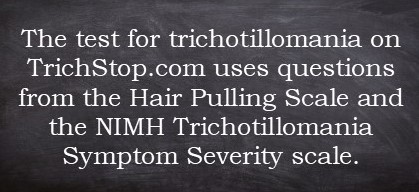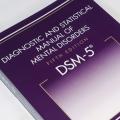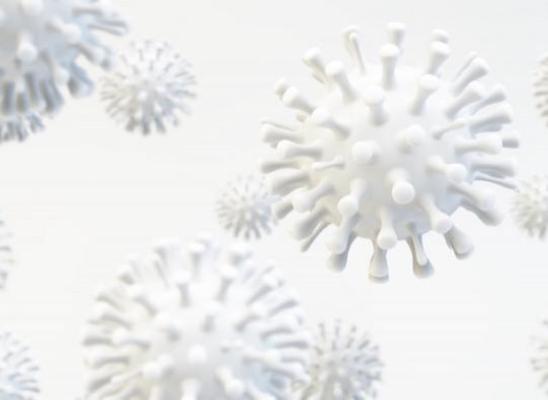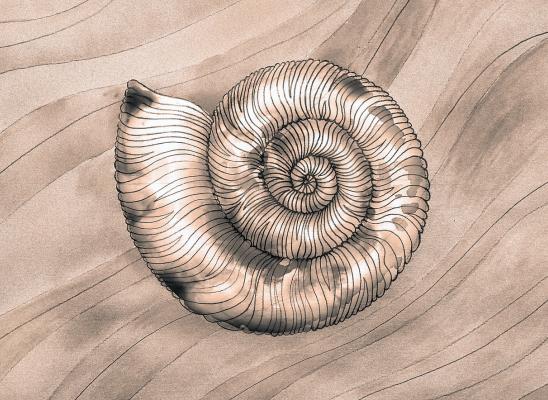Diagnosis: How it’s done and why it’s relevant

Online test
Find out the severity of your symptoms with this free online test
Still a misunderstood condition, research is providing more ways for clinicians to diagnose trichotillomania and its subtypes accurately. However, many negative connotations the word “diagnosis” has, there are benefits to diagnostic accuracy for people with trichotillomania.
Diagnosis is…
Therapists have mixed feelings about the diagnostic process. Some believe it is essential and imperative for accurate treatment while others look at it as a means to facilitate treatment but not as important as what the client experiences. Some will require a client to participate in multiple types of assessments and tests to get the diagnosis right, while others will only rely on client self-report and then pick an appropriate label out of the DSM-5. Regardless of one’s therapeutic perspective, an accurate diagnosis is key to selecting evidence-based treatments for clients. For people with trichotillomania, diagnosis can be even more important due to the prevalence of misdiagnosis which does not help clients at all.
Trichotillomania is a disorder often confused for other mental health disorders such as obsessive-compulsive disorder, body dysmorphic disorder, addiction, or non-suicidal self-harm. Clinicians untrained in determining the differences between trichotillomania and OCD, for example, may select therapeutic interventions deemed effective for managing compulsive behaviors, but if a client has trich and not OCD, the treatment has a high risk of failing. When treatment fails due to misdiagnosis, it is not the client’s fault, yet they often feel increased depression and hopelessness because the treatment did not help.
DSM-5
Let’s get back to defining diagnosis. The DSM-5, or the Diagnostic and Statistical Manual, fifth edition, is a publication from the American Psychiatric Association (APA) containing all of the recognized mental health disorders that the APA has determined to be validated by research. The book is big. It is equivalent in size to the Oxford English Dictionary. It is used by doctors, nurses, mental health providers, case workers, and anyone else who works with people who may have a mental health disorder. However, not all of the people who use the DSM-5 are fully trained in its application.
For each mental health disorder, the DSM-5 provides a background of what the disorder is, who tends to present with symptoms and when, the symptoms of the disorder, criteria for meeting diagnostic criteria, epidemiological data, onset and course, and most importantly, how to differentiate one disorder from another that looks similar. Most people who use the DSM focus on the symptoms list and run down the checklist to determine if a client fits with the list. However, the fine details outside the list of diagnostic criteria take more time to absorb, but most people do not take the time to read. Those points often provide guidance on what is or is not consistent with the diagnosis as well as what to look for that may co-occur with the primary diagnosis. Since many people present to therapy with more than one disorder and depending upon what the person chooses to focus on during the assessment session, the clinician may diagnose a secondary condition and miss the others.
Clinical purpose
Diagnosis serves a clinical purpose in that it drives treatment. When a therapist guides a client through goals of therapy to create a treatment plan, that treatment plan and subsequent interventions need to be consistent with the diagnosis. In healthcare systems where an insurance company is going to reimburse the therapist or doctor for their services, the treatment plan and diagnosis must be consistent with each other, or the provider will not receive reimbursement. The diagnosis also drives what kinds of medications a doctor can prescribe for a client. Clinically, the treatment goals must match the diagnosis. In cases where a therapist is in private practice and does not take insurance, the requirements for diagnosis are less strict. That is often the reason therapists who are skeptical of the diagnostic process choose to manage their practices differently.
Client purpose
Diagnosis also provides clients with many benefits.
- It validates your experience. Often, when someone first begins to experience the compulsions of trich, it can be overwhelming. Then, after attempts to quit fail, there is a tendency to view oneself as inferior for not being able to manage these urges. By giving the compulsions a name, it shows that it is a real mental health disorder and not due to weakness or some character flaw. It is a real disorder with a name.
- Depersonalizes the behaviors. By naming the disorder, the behaviors become something that someone does, not who someone is. Just as a person’s self-worth is not attached to having asthma, a person who struggles with trich can know that the behaviors do not define who they are.
- Helps match treatment to the real issue. Even though research on treatment for trichotillomania has a long way to go, there are evidence-based practices that help people learn to manage the urges. Therefore, instead of being treated for compulsions because of an OCD diagnosis, treatment can focus on the real issue which is the urge to pull hair.
- Directs your search for coping strategies and support. Knowing the name of what you struggle with helps direct your search for ideas from other people who struggle with the same thing. Even though the condition does not have high prevalence rates, a search of trichotillomania on the internet will yield blogs, resources, education, and online support groups that can help.
Diagnostic accuracy
Multiple formal assessments can be used to provide accurate information for diagnosis. For example, the Trichotillomania Diagnostic Interview is a basic assessment used to identify symptoms of trich. Then, there is the Milwaukee Inventory for Styles of Trichotillomania in a version for children and a separate version for adults that helps clinicians and clients identify whether pulling behaviors are focused or automatic. The distinction is vital for developing treatment interventions because the motivations that drive focused pulling are different from automatic pulling. Finally, since trich is an episodic disorder, meaning there may be periods of time without pulling urges, there is an assessment called the Hairpulling distress and impairment scale that measures the level of functional impairment and emotional distress that accompanies hairpulling episodes.

Accurate diagnosis of trichotillomania is not only important for correctly identifying the disorder but identifying subtypes and severity can inform treatment, so it is helpful and not harmful. For a person who struggles with compulsive hair pulling, an accurate diagnosis can be a source of hope.
Online test
Find out the severity of your symptoms with this free online test
Start your journey with TrichStop
Take control of your life and find freedom from hair pulling through professional therapy and evidence-based behavioral techniques.
Start Now




